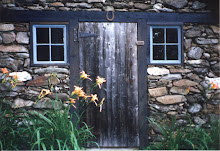
SNOW SITE LETS CHICAGO SEE IF PLOWS ARE REALLY IN A RUT
Published: January 3, 2012, The New York Times
"In part," a city official said, "the idea to incorporate more technology into the city’s official answer to snow grew out of a blizzard that dumped more than 21 inches and essentially closed down the city in early February."
“If that’s happening, you’ll see it,” Mr. Emanuel’s chief technology officer, John Tolva, said.
The snowplow tracker, which city officials expect to debunk the belief that routes are politically motivated, is but one element of a new computer package focused exclusively on snow — a fact of life in a city that prides itself on its stoic response to winter weather, but was clobbered last year by a blizzard that stranded scores of motorists on a thoroughfare along Lake Michigan.
In part, Mr. Tolva said, the idea to incorporate more technology into the city’s official answer to snow grew out of that blizzard, which dumped more than 21 inches and essentially closed down the city in early February. On their own, residents bonded over shoveling alleys, clearing sidewalks and even being trapped together on Lake Shore Drive, he said, so why not encourage all that bonding in advance online?
Among other elements of the new Web site: organization of a “Snow Corps,” which will match volunteers with mounds to shovel; winter-related computer applications to guide people when two inches of snow has fallen, alerting them to parking bans on city streets or, if it is too late, telling them where their car has been towed to; and an “adopt-a-sidewalk” program that will soon allow residents to share shoveling tools and claim shoveling responsibilities on a map.
It remains to be seen whether Chicagoans really wish to officially stake out shoveling responsibilities on sidewalks — even the ones right outside their homes. And ChicagoShovels.org offers no elegant computer solution to the age-old debate in this city: how to find a more dignified, efficient manner for claiming “dibs,” the long-established practice of placing chairs, cones, boxes or other junk to reserve a cleared parking space.
Still, Chicagoans will surely watch the snowplow tracker, which will share data the city was already collecting. The information is monitored in the city’s snow command center, where supervisors also track the slickness of bridges, National Oceanic and Atmospheric Administration weather maps and driving conditions captured by 1,000 cameras mounted around the city.
Oddly, though, in a winter season that some experts predicted would bring heavy snow, little has arrived so far. Like other cities in the Midwest, Chicago has spent millions of dollars less — $5.5 million less, in its case — because it needed tens of thousands of tons less road salt in December than it had the year before.
Thanks to superstition or history or both, no one here seemed willing to declare a trend. “I’m not calling this a mild winter yet,” Mr. Tolva said. And on Monday, Chicagoans awoke to snow.






































